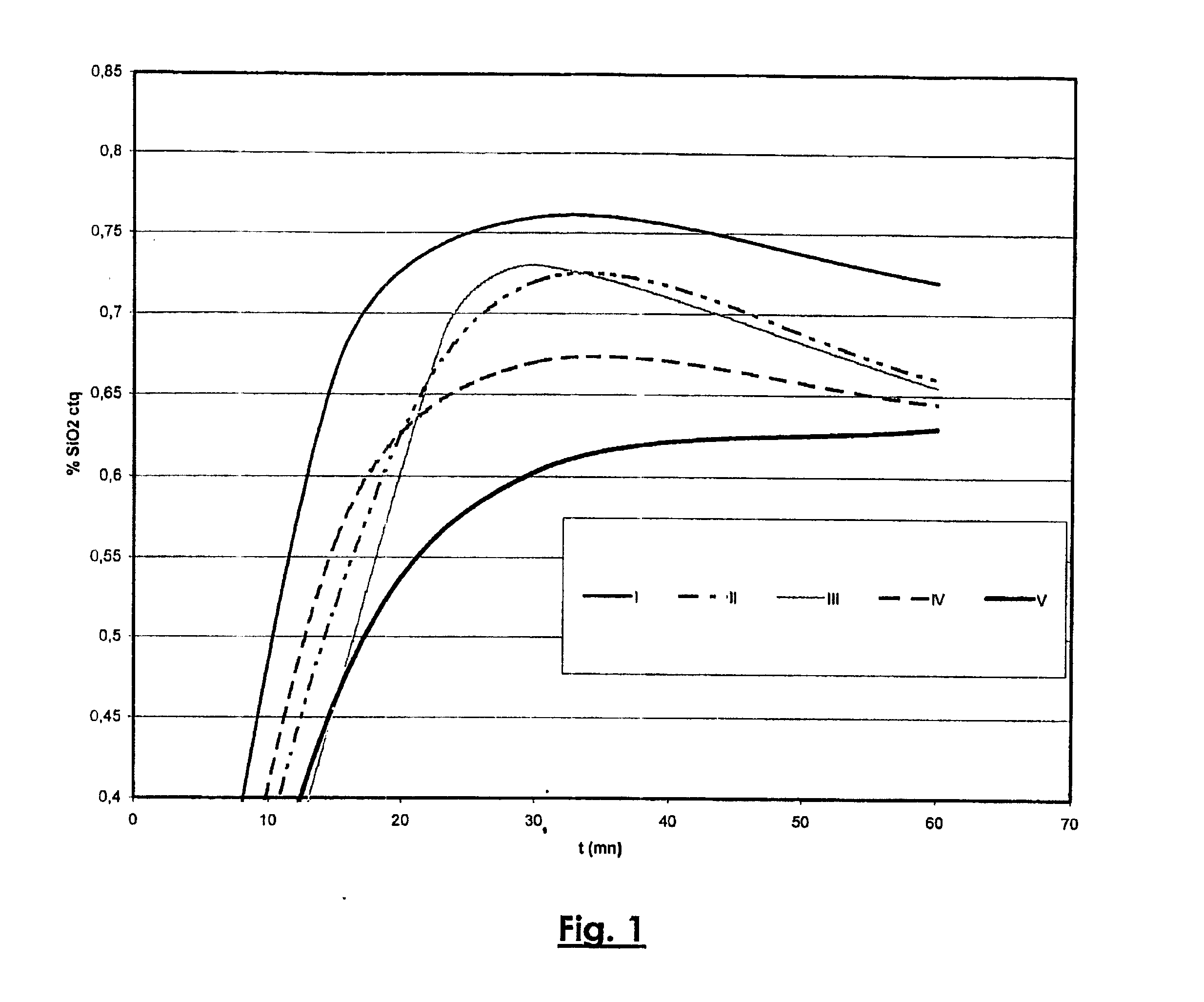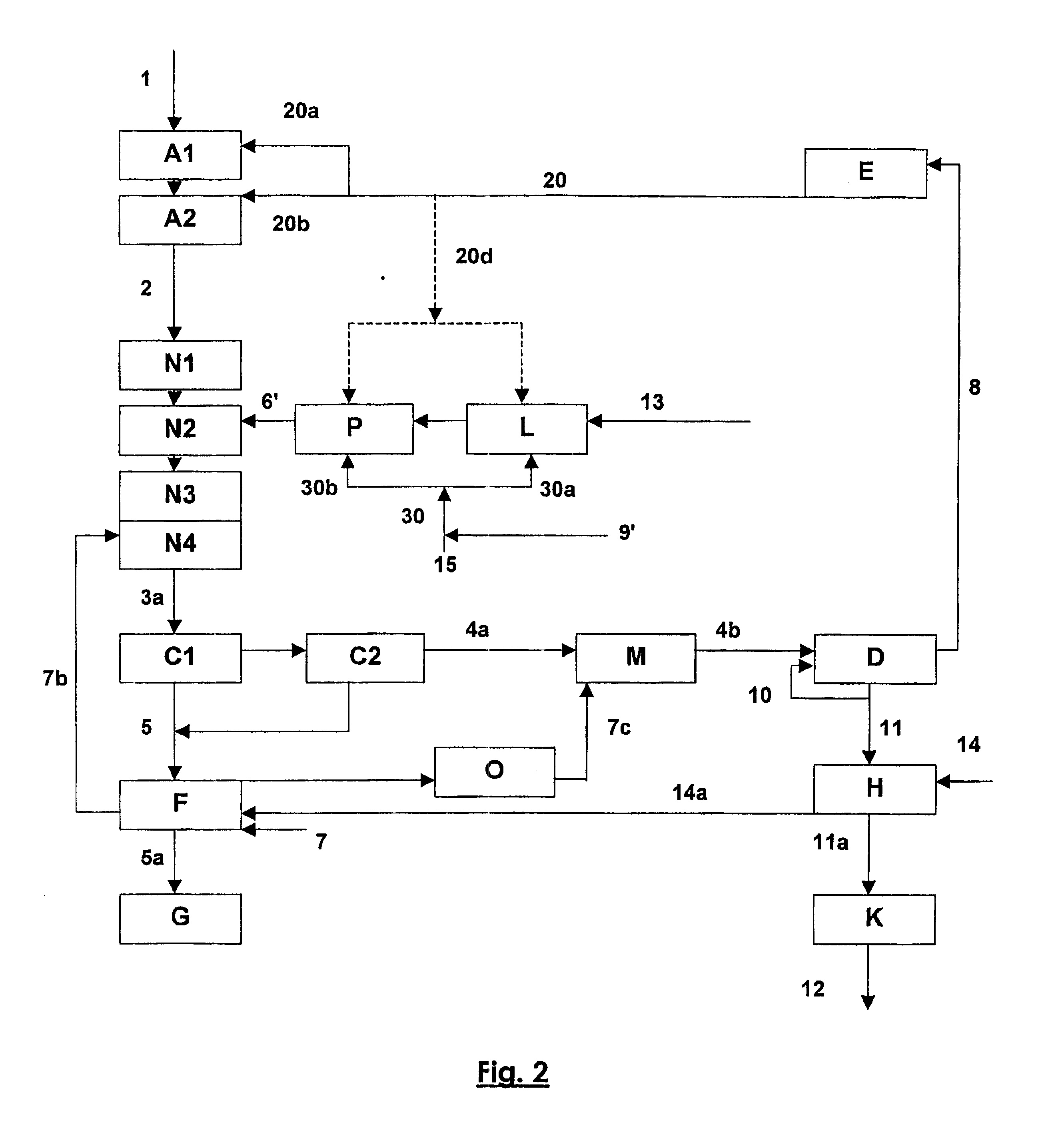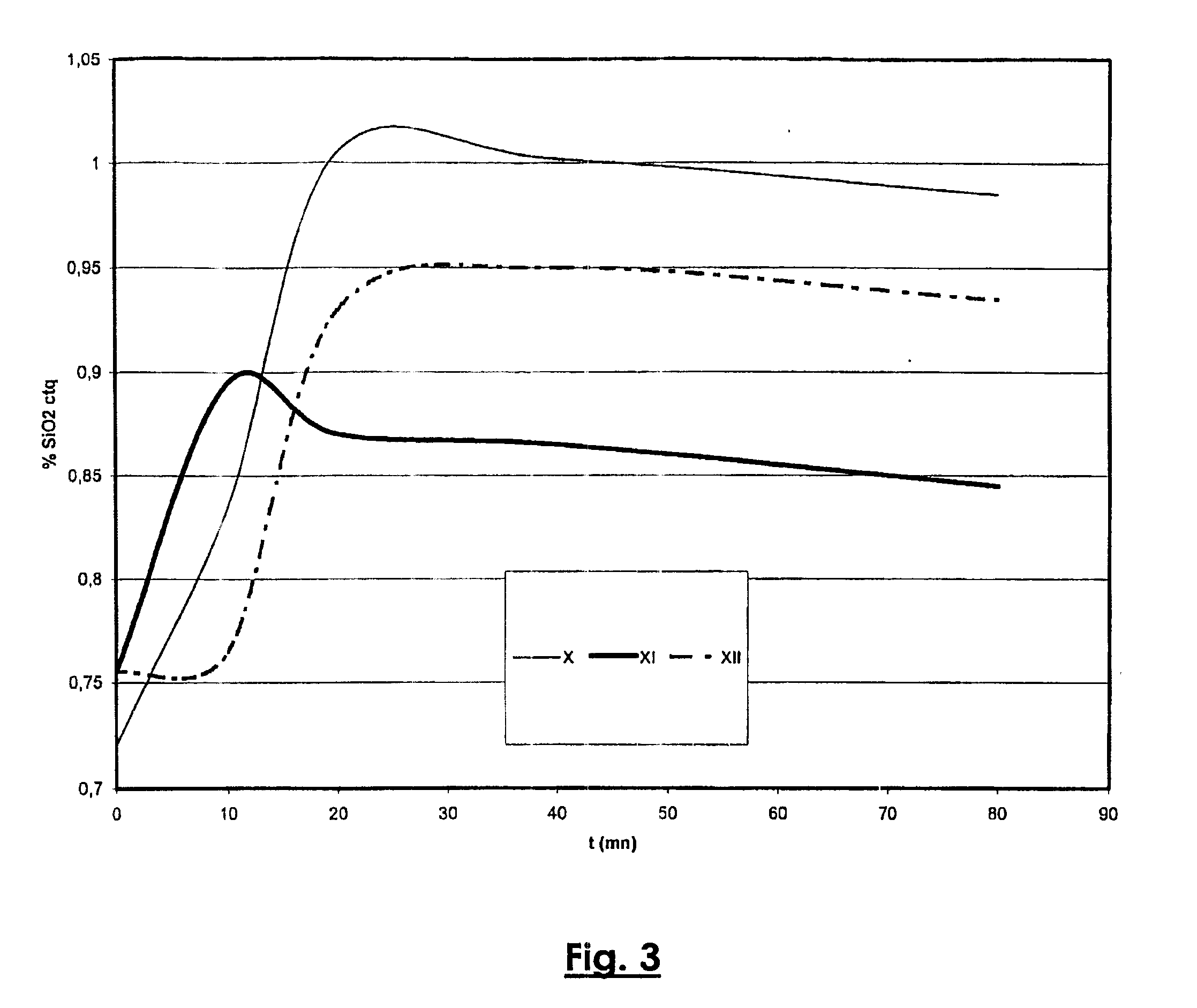The bayer process for production of alumina trihydrate by alkaline digestion of bauxite, the process comprising a predesilication step
- Summary
- Abstract
- Description
- Claims
- Application Information
AI Technical Summary
Benefits of technology
Problems solved by technology
Method used
Image
Examples
example 1
Dissolution Rates (FIG. 1)
[0037] Different sodalites were synthesized for 24 hours under predesilication conditions chosen so as to evaluate the effect of the presence of impurities in the aqueous sodic solution.
[0038] The impurity contents of the different sodic solutions used are as follows:
I13% CO3 ctq 4% SO3 ctq4% Cl ctqII13% CO3 ctq 0% SO3 ctq0% Cl ctqIII0% CO3 ctq4% SO3 ctq0% Cl ctqIV0% CO3 ctq0% SO3 ctq4% Cl ctqV0% CO3 ctq0% SO3 ctq0% Cl ctq
[0039] These sodalites were then digested in a liquor containing alumina under the following digestion conditions: [0040] Temperature: 145° C. [0041] Aluminate liquor: [0042] caustic concentration: 200 g Na2O / l [0043] alumina supersaturation: Rp=dissolved Al2O3 content (g / l)dissolved caustic Na2O content (g / l)=1.29[0044] content of impurities: 12% CO3 ctq, 4% SO3 ctq, 4% Cl ctq
[0045] As shown in FIG. 1, digestion of these sodalites results in solution rate curves (content of dissolved silica in proportion to the c...
example 2
Digestion of Monohydrate Bauxite with Sweetening (FIGS. 2 and 3)
[0047] This example illustrates an improvement to the digestion process with sweetening described in European patent EP 0 960 069.
[0048] A monohydrate bauxite 1, after a first wet grinding A1 in the presence of an aliquot 20a of a green liquor 20, for which the Rp is preferably between 0.55 and 0.65 and the caustic concentration is between 160 and 220 g Na2O / l, is introduced with another aliquot 20b of the green liquor 20 into digesters to form a slurry that is heated to a temperature between 220 and 300° C. for a sufficiently long time to solubilize the alumina monohydrate, typically between 0.2 and 1.0 hours. The slurry 2 output from this first pressurized digestion A2, for which the alumina supersaturation is characterized by an Rp value between 1.05 and 1.20, is partially cooled while its pressure is released (Cooling / Flash N1). A pulp 6′ resulting from wet grinding L of a trihydrate bauxite 13 is injected under p...
example 3
Temporary Use in an Old Installation (FIG. 4)
[0062] The Bayer process in this example will be used to treat an alumina trihydrate bauxite (gibbsite).
[0063] A gibbsite bauxite 101 is subjected to wet grinding B in the presence of a sodic solution that is usually an aliquot of the green liquor 120. The ground bauxite is subjected to a predesilication treatment P (typically 8 hours at 100° C.), usually using an aliquot of the green liquor 120. The slurry 102 output from the digestion A is subjected to postdesilication Q and then dilution by adding a fraction 107b of the diluted liquor returning from the red mud washer tank series. The resulting slurry 103 is then settled C1 in the presence of a flocculating agent and finally filtered C2 to separate the sodium aluminate liquor 104a from insoluble residues 105. After backwashing with raw water 107 and water 114a from washer tank series of the produced alumina trihydrate 111, these inert residues 105a are disposed of in the tip G.
[0064...
PUM
 Login to View More
Login to View More Abstract
Description
Claims
Application Information
 Login to View More
Login to View More - R&D
- Intellectual Property
- Life Sciences
- Materials
- Tech Scout
- Unparalleled Data Quality
- Higher Quality Content
- 60% Fewer Hallucinations
Browse by: Latest US Patents, China's latest patents, Technical Efficacy Thesaurus, Application Domain, Technology Topic, Popular Technical Reports.
© 2025 PatSnap. All rights reserved.Legal|Privacy policy|Modern Slavery Act Transparency Statement|Sitemap|About US| Contact US: help@patsnap.com



